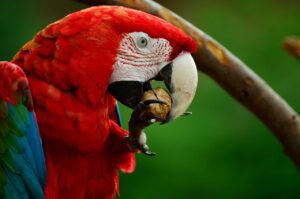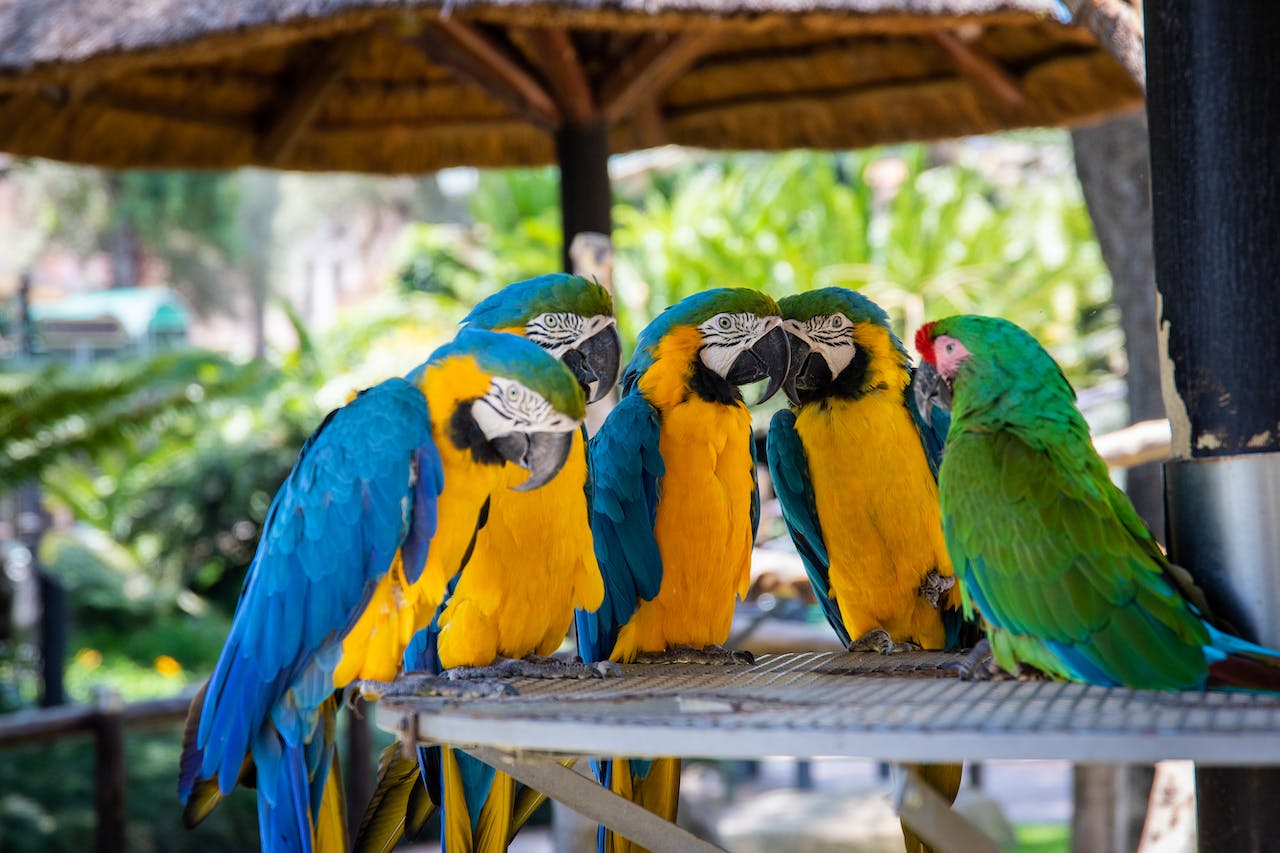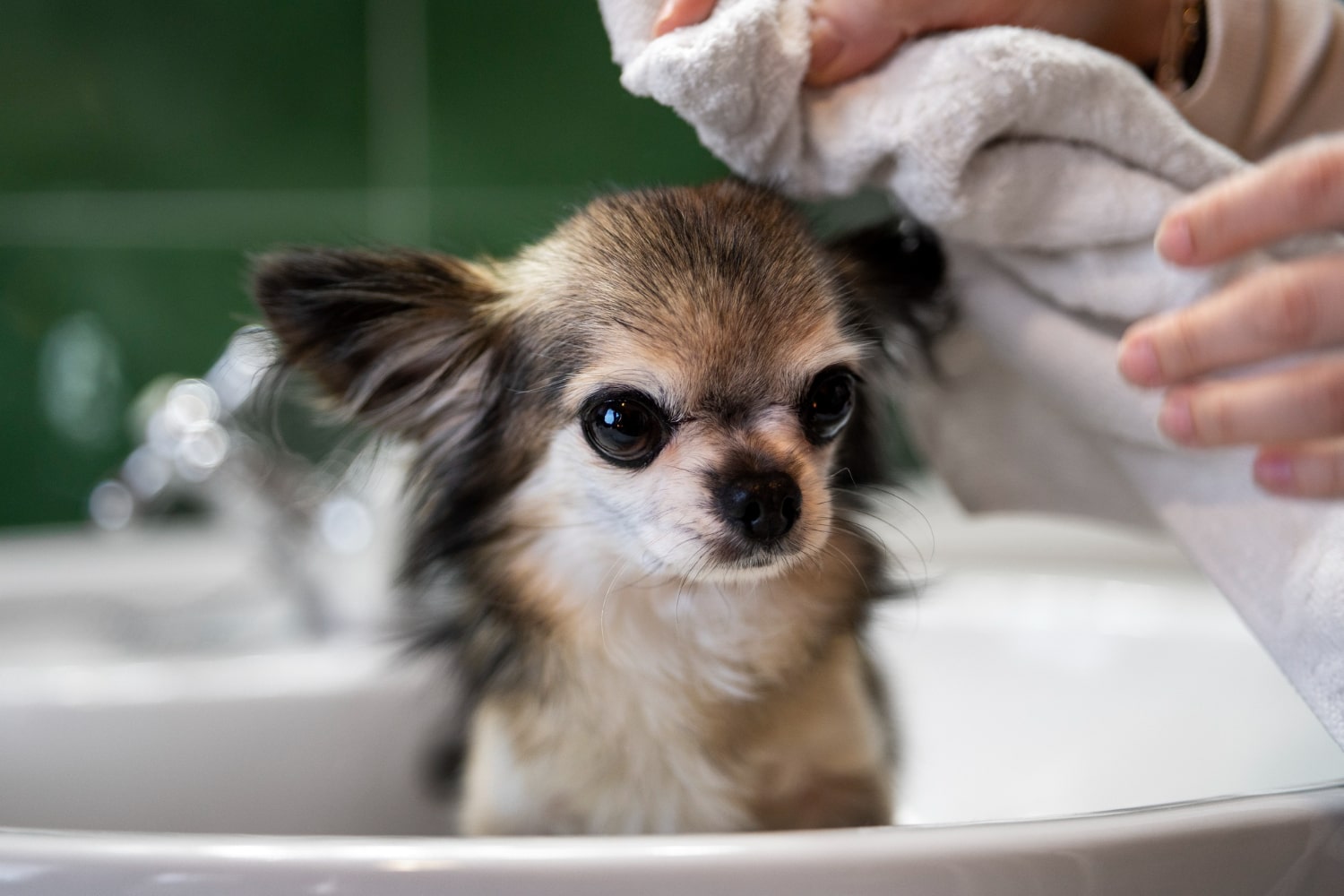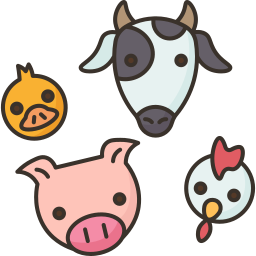Macaws with their vibrant plumage and captivating personalities are among the most majestic members of the parrot family. These intelligent birds have distinctive features that make them stand out in the avian world. Let’s explore what makes a macaw, what they eat the significance of macaw clay licks where they live and insights into their family life.
About What Makes a Macaw?
Macaws are large colorful parrots known for their striking appearance and sociable nature. With a wingspan that can reach up to four feet, macaws are truly impressive birds. Their distinctive feather coloring, which can include shades of red, blue, yellow and green adds to their allure. Macaws are also renowned for their intelligence and ability to mimic human speech.
What Do Macaws Eat?
Understanding the dietary preferences of macaws is crucial for their well-being. In the wild, macaws have a diverse diet that includes fruits, seeds, nuts, and flowers. They are particularly fond of nuts such as almonds, walnuts, and Brazil nuts. Additionally macaws consume a variety of fruits like apples, bananas and berries. A balanced diet is essential for their overall health, encompassing proteins, vitamins and minerals.
What Is a Macaw Clay Lick?
One fascinating behavior observed in macaws is their visit to clay licks. Macaw clay licks are specific areas where these birds gather to consume mineral rich clay. The clay serves various purposes such as neutralizing toxins found in certain fruits they consume and providing essential minerals like sodium. This behavior is not only crucial for their nutritional needs but also showcases the intricate relationship between macaws and their environment.
Where Do Macaws Live?
Macaws are native to the rainforests of Central and South America. Their habitats range from dense tropical jungles to open savannas. The diverse environments they inhabit emphasize their adaptability. Unfortunately many species of macaws face threats due to habitat loss and illegal pet trade. Conservation efforts are crucial to preserving these beautiful birds and their ecosystems.
Macaw Habitat and Diet
The natural habitat of macaws plays a pivotal role in shaping their diet. Rainforests provide an abundance of fruits, nuts and seeds forming the foundation of their nutrition. Macaws are also known to forage for insects adding protein to their diet. In captivity, replicating this diverse diet is essential. Pelleted diets formulated for large parrots, supplemented with fresh fruits, vegetables, and nuts, can ensure their nutritional needs are met.
Macaw Family Life
Macaws are social birds that thrive on companionship. In the wild, they form strong bonds with a mate and often live in large extended family groups. This social structure is reflected in their interactions within the aviary or home environment. Macaws are known for their loyalty to their human companions and can develop deep emotional connections.
Ensuring a macaw’s wellbeing extends beyond their diet. Providing mental stimulation opportunities for physical exercise and a safe comfortable living space are integral aspects of their care. Regular veterinary check-ups are essential to monitor their health and address any potential issues promptly.
What Is the Macaw’s Staple Diet?
While macaws have a diverse palate certain foods form the foundation of their staple diet. In the wild their primary sources of sustenance include nuts, seeds, fruits, and flowers. For those keeping macaws in captivity a well balanced pelleted diet designed for large parrots serves as an excellent staple. This ensures they receive essential nutrients crucial for their health and longevity.
Quick Facts about Macaws

Lifespan:
Macaws are known for their impressive lifespan, often reaching 60 years or more in captivity. Proper care, nutrition, and a stimulating environment contribute to their longevity.
Intelligence:
These birds are incredibly intelligent and require mental stimulation. Providing toys puzzles and interactive activities helps keep their minds sharp.
Vocal Abilities:
Macaws are adept mimickers and can learn a wide range of sounds, including human speech. Their vocalizations play a significant role in their communication and social interactions.
Things to Consider
Owning a macaw comes with responsibilities and considerations:
Space: Macaws given their large size, require ample space to move and stretch their wings. A spacious cage and dedicated play areas are essential.
Social Interaction: Macaws thrive on social interaction. Owners should spend quality time with their birds to build trust and strengthen the bond.
Enrichment: Providing mental and physical stimulation is crucial. Rotating toys introducing new challenges, and offering a variety of foods contribute to their overall wellbeing.
How Much Food Do Macaws Need?
The dietary requirements of macaws vary based on factors like age, size, and activity level. On average, a macaw consumes around 1/2 to 3/4 cups of high-quality pellets daily. This should be supplemented with fresh fruits, vegetables and occasional treats. Monitoring their weight and adjusting portions accordingly is essential to prevent obesity.
What Food Should You Not Feed Macaws?
While macaws have a broad culinary acceptance, certain foods can be harmful:
Toxic Plants: Avoid feeding macaws any plants known to be toxic to birds such as avocado chocolate, and caffeine-containing items.
High-Fat Foods: While macaws benefit from healthy fats excessive fatty foods can lead to obesity. Limit treats like seeds and nuts to maintain a balanced diet.
Processed Foods: Highly processed and sugary foods should be avoided. Stick to natural fresh options to promote optimal health.
Conclusion:
In conclusion understanding what makes a macaw their dietary preferences the significance of clay licks their natural habitat and family life is crucial for anyone considering these magnificent birds as companions. By replicating their natural diet and providing a stimulating environment macaws can lead happy and healthy lives. Conservation efforts are vital to preserving their native habitats ensuring future generations can marvel at the beauty and intelligence of these remarkable birds.












